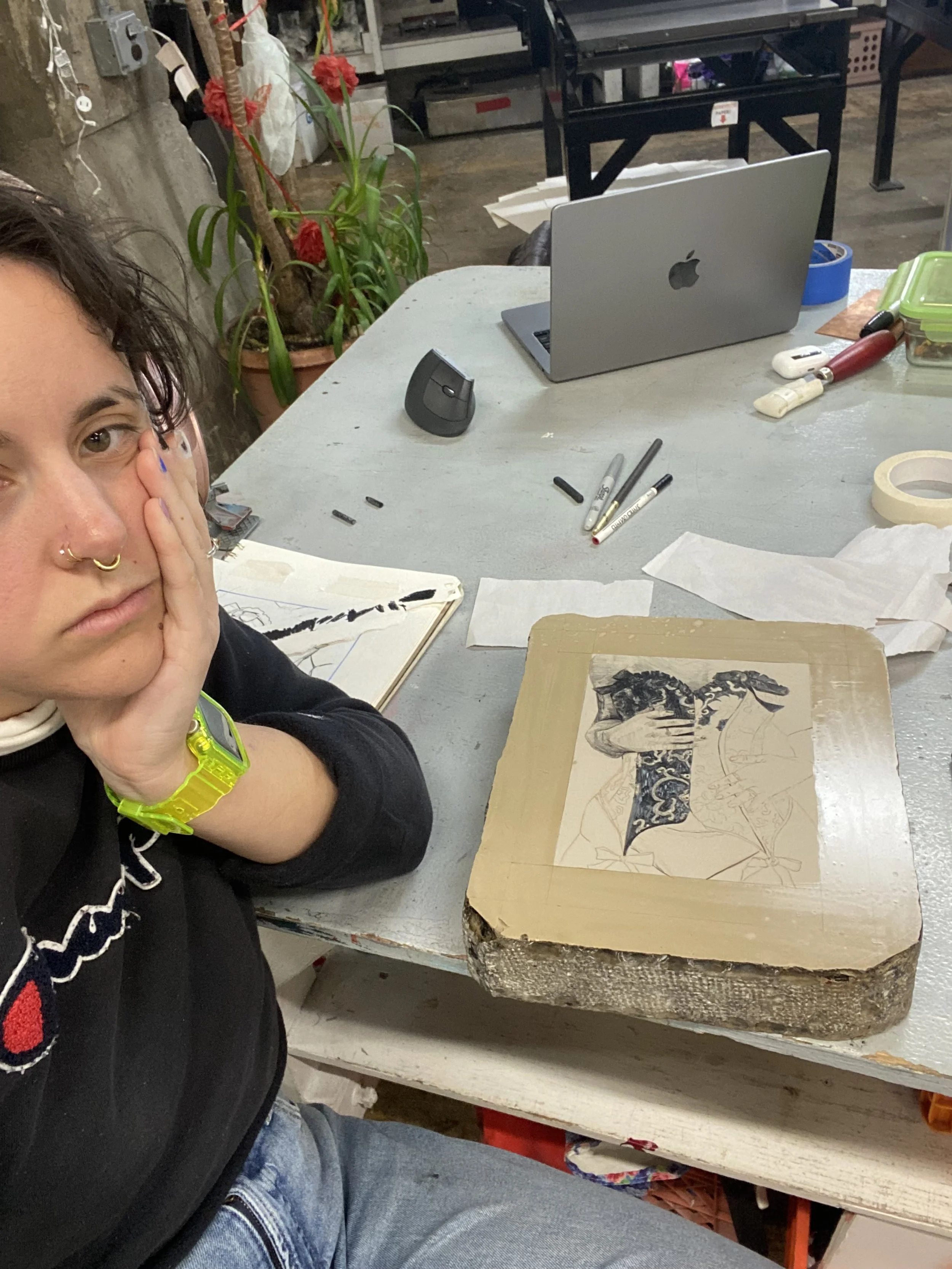Second State Press Fob Holder Program
In January 2025, I was accepted into the Fob Holder Program at Second State Press in Philadelphia, PA. Designed for printmakers who no longer have regular access to a print studio, the program provides 24/7 studio access in exchange for eight hours of weekly volunteer work as a studio monitor. This opportunity has allowed me to reconnect with printmaking techniques I haven’t used since undergrad, while also challenging myself to learn and experiment with new processes.
With this time, I have used printmaking as a way to continue exploring my identity through themes of self-discovery, yearning, and transformation. The laborious nature of the medium has offered space for reflection, allowing me to translate personal shifts and emotions into visual form.
In the first month of the Fob Holder Program, I focused on monotype printing and reintroducing myself to the single-print method through self-portraiture. I was particularly interested in exploring the overlap between painting and print, using monotypes as a way to blur the boundaries and dip into the print world. Fellow residents introduced me to the idea of using vegetable oil and oil paints—an exciting discovery that opened up a new world of color and painterly texture. I quickly learned that timing is crucial: if you wait too long, the paint adheres to the plexiglass rather than transferring to the paper. This unexpected outcome became part of the learning process and reminded me how responsive and unpredictable printmaking can be.
I also began experimenting with screen monoprinting, using water-based crayons and a translucent base to draw directly onto a screen and print the image a few times before it fades. I revisited some old drawings from a ceramic piece I created, reimagining them on fabric as a way to further explore material, memory, and transformation. This process is still evolving, and I’m continuing to develop how it ties into my .
I also began experimenting with screen monoprinting, using water-based crayons and a translucent base to draw directly onto a screen and print the image a few times before it fades. I revisited some old drawings from a ceramic piece I created, reimagining them on fabric as a way to further explore material, memory, and transformation. This process is still evolving, and I’m continuing to develop how it ties into my .
In February, a fellow resident and I co-organized a Valentine’s Day print exchange between the Fob Holders and Second State Press staff. We gave everyone a two-week deadline to create and share valentine-themed prints. About 11 people participated, and the project ended up being a fun and low-pressure way for many of us to learn the ins and outs of the studio while building community.
For my valentines, I revisited a design I had been developing that merges a tattoo-style aesthetic with the popular Irish typography. The print features the word Grá—which means “love” in Irish—set in a stylized font, bordered by a chain link motif. Grá is a word that holds personal meaning for me; it’s on a necklace I wear every day that was gifted by my oldest sister, and creating this print was a way to blend cultural identity with sentimental value through a screen printed design.
Currently, I’ve been teaching myself lithography with the help of fellow residents, Tamarind Techniques for Fine Art Lithography, and even a few TikTok tutorials. I quickly learned that lithography is a meticulous and unforgiving process—there’s no cutting corners. If you miss a step or make a mistake, the stone becomes unprintable and you have to start from scratch (and that’s after the labor-intensive prep of levigating the stone).
Despite the challenges, once I began to understand the science behind the process, I was able to pull a few successful prints—some of which I sold at PrintPHILLY! this April. I'm excited to keep pushing this medium further, with hopes of working at a larger scale and exploring more intricate imagery.







